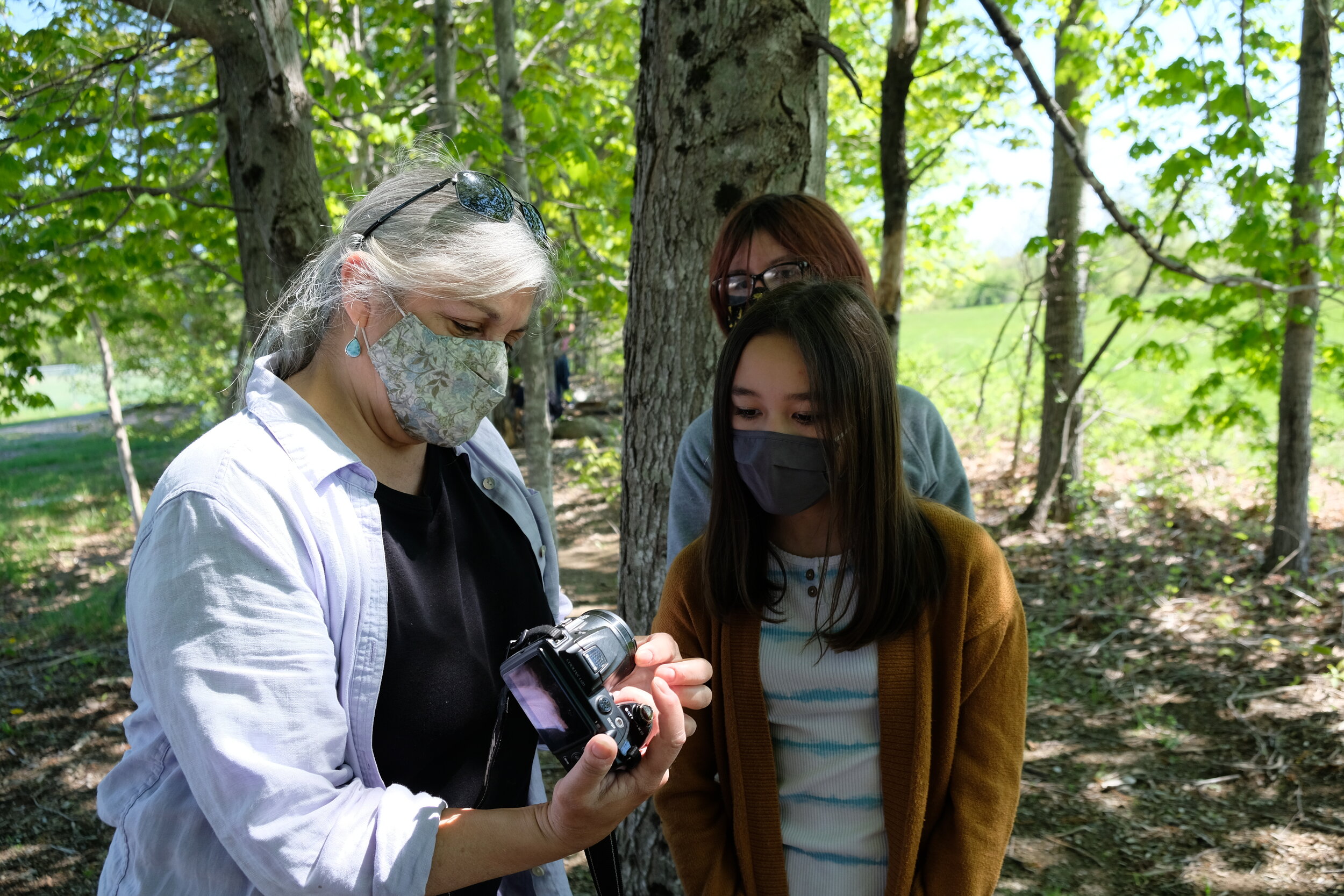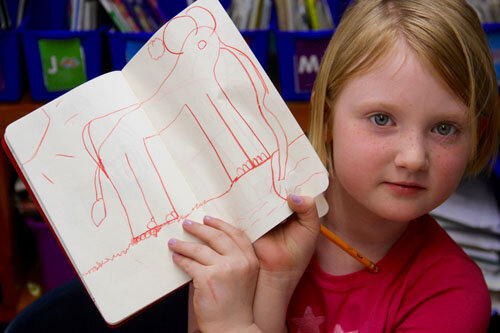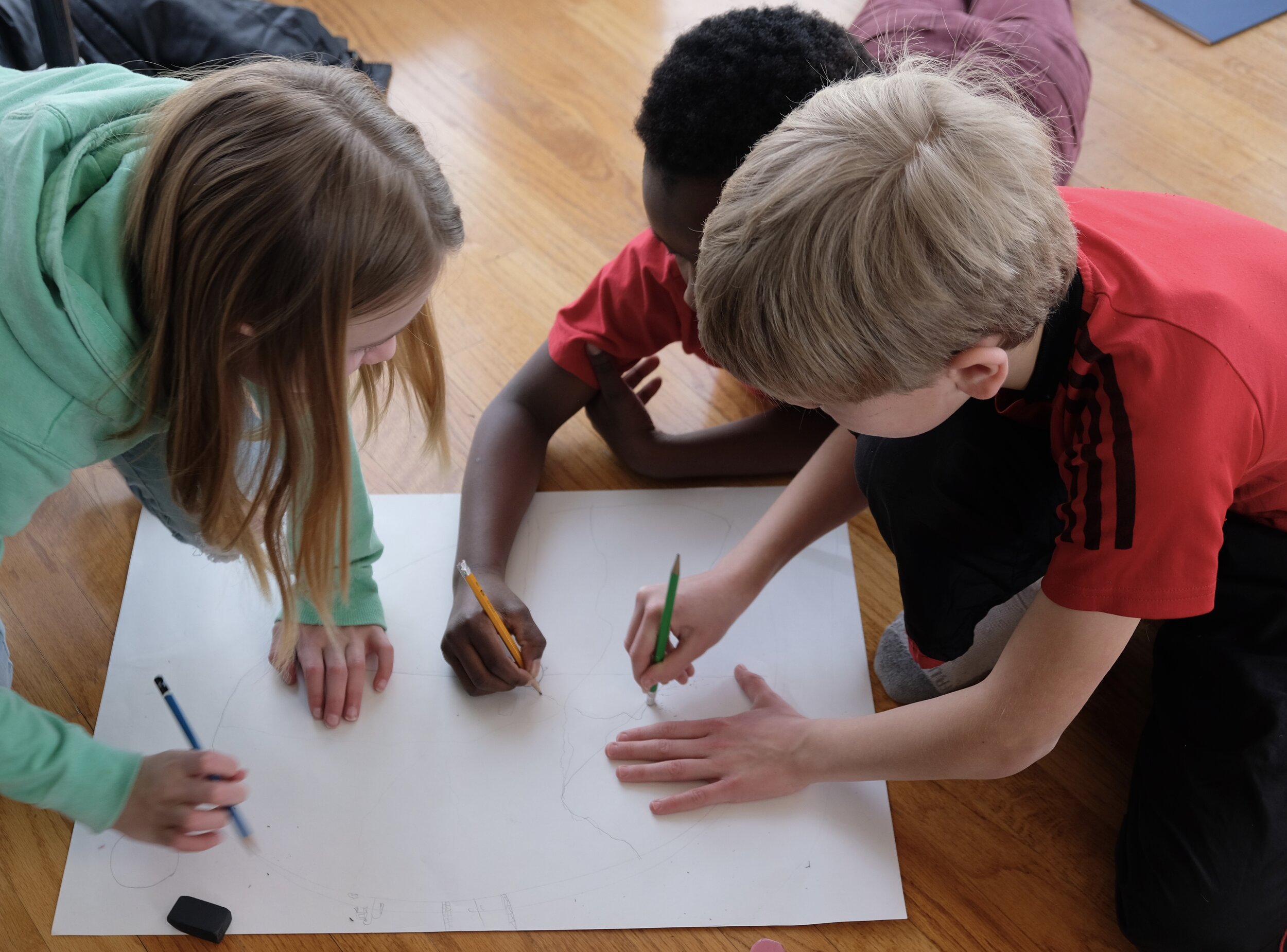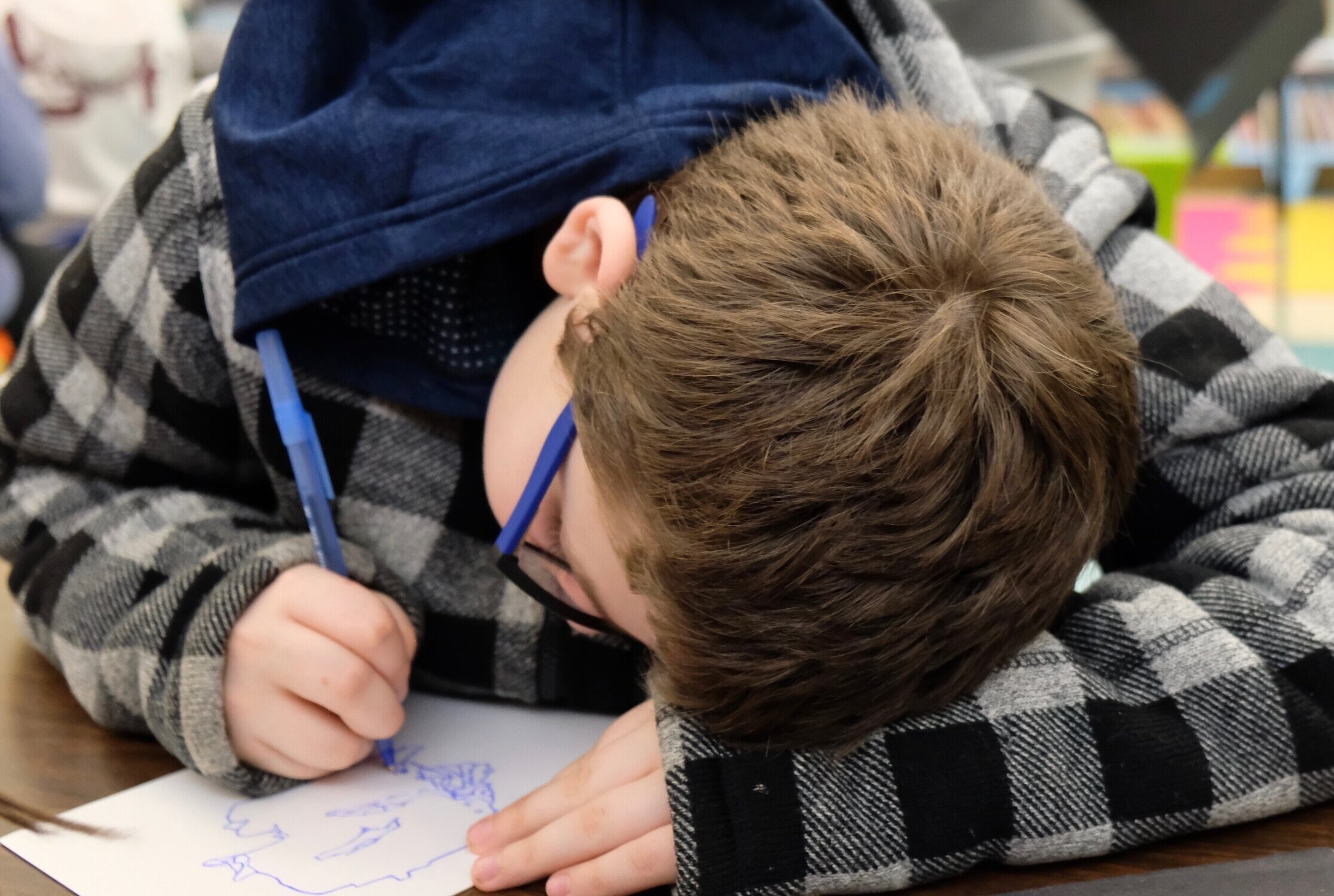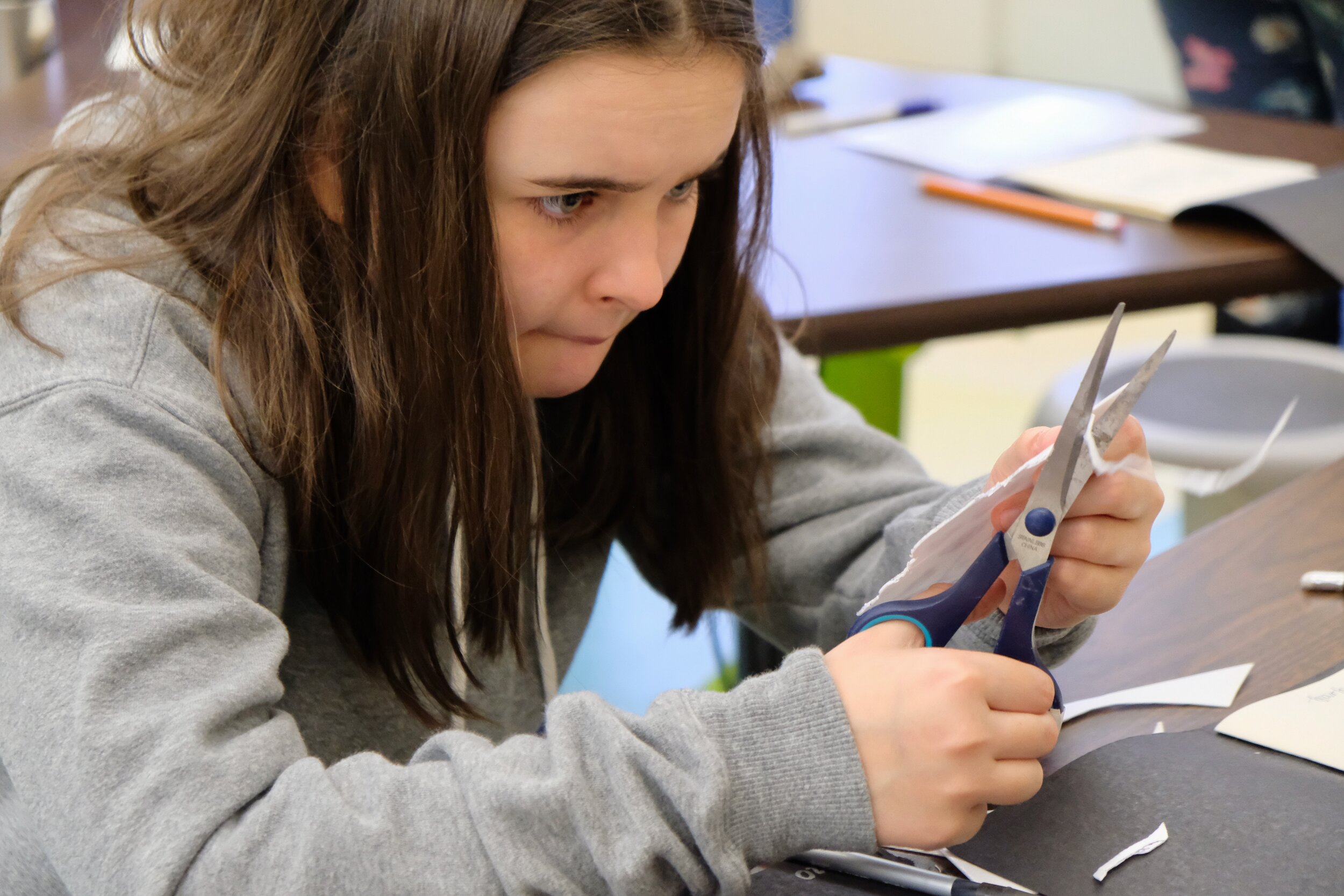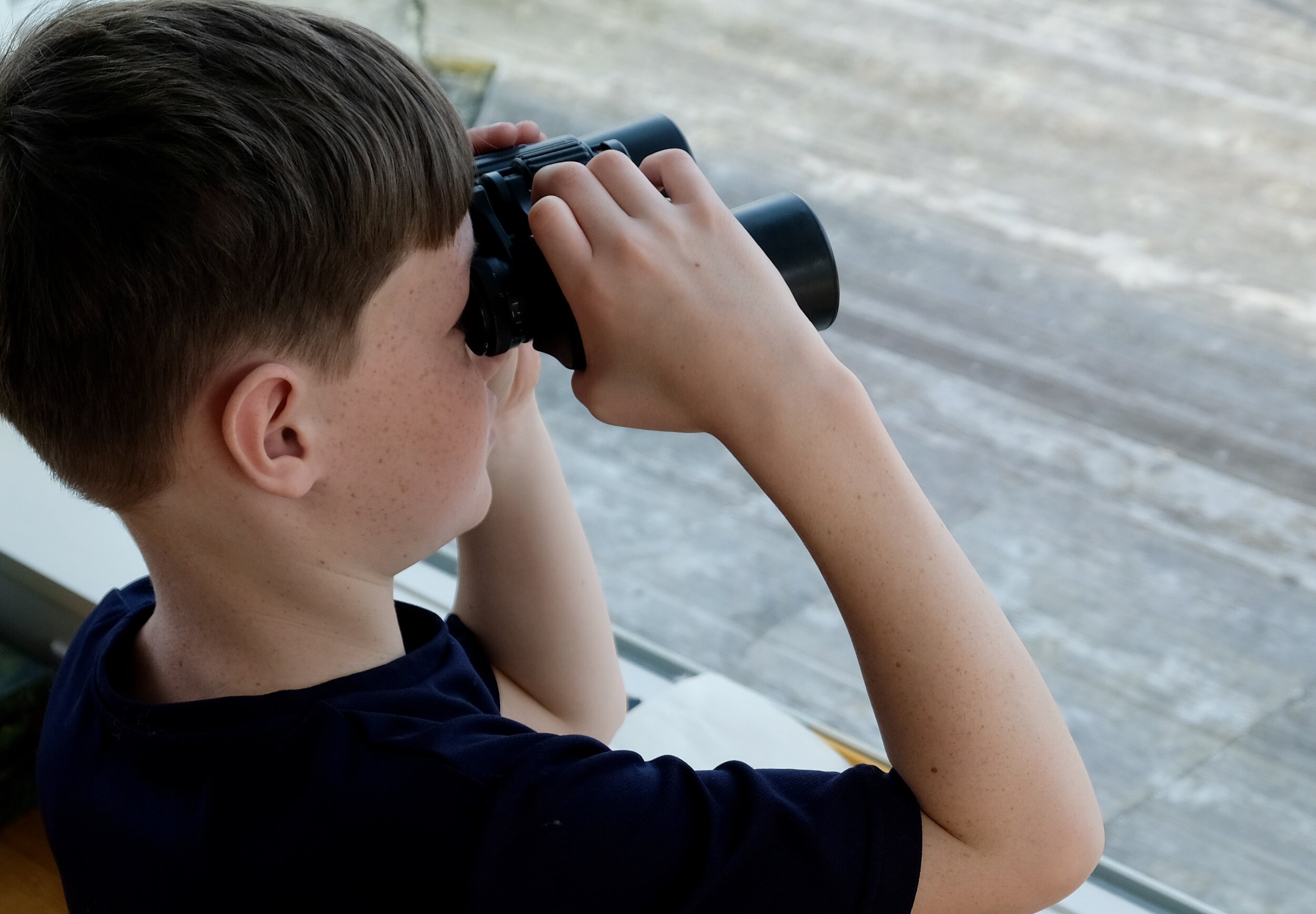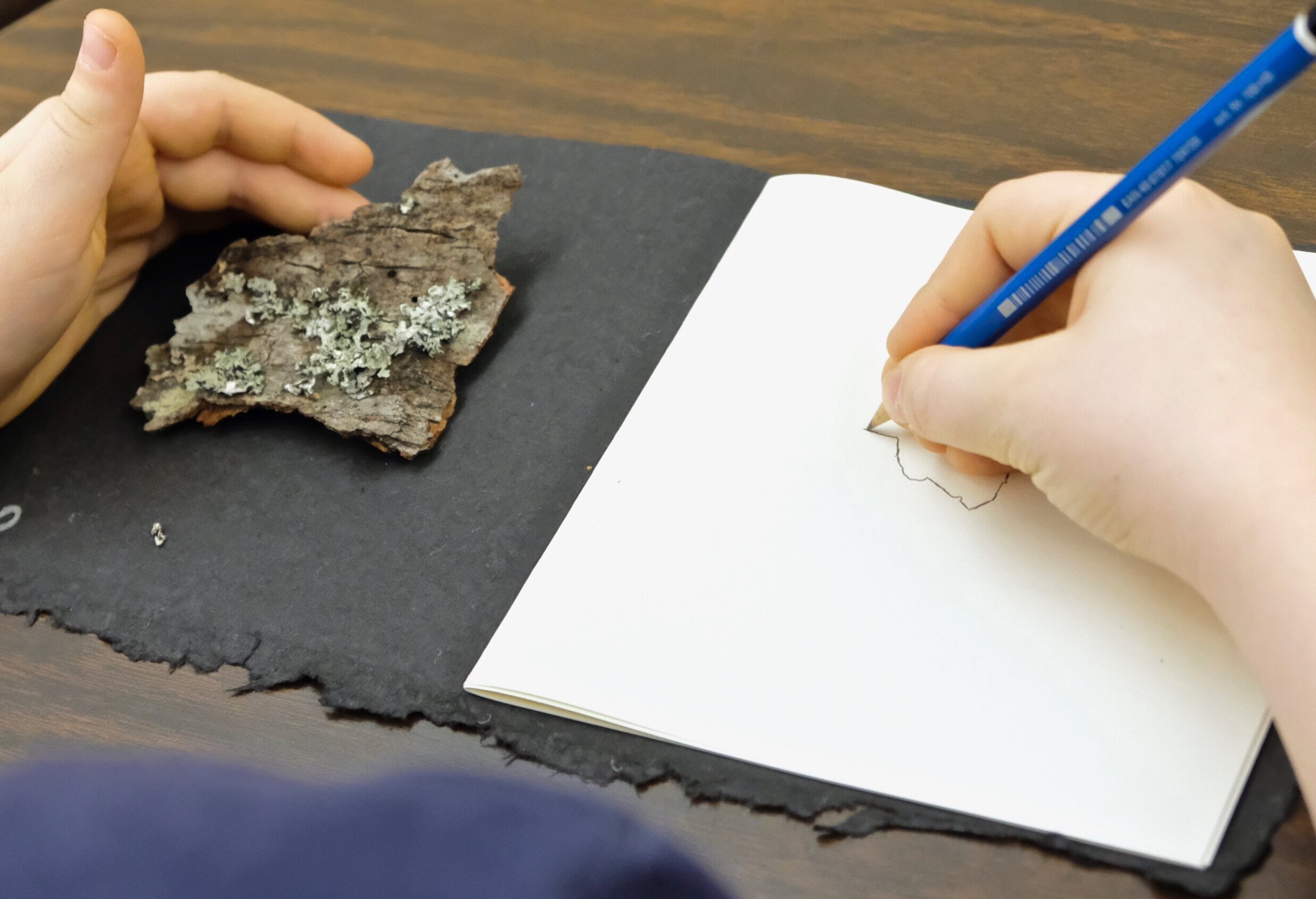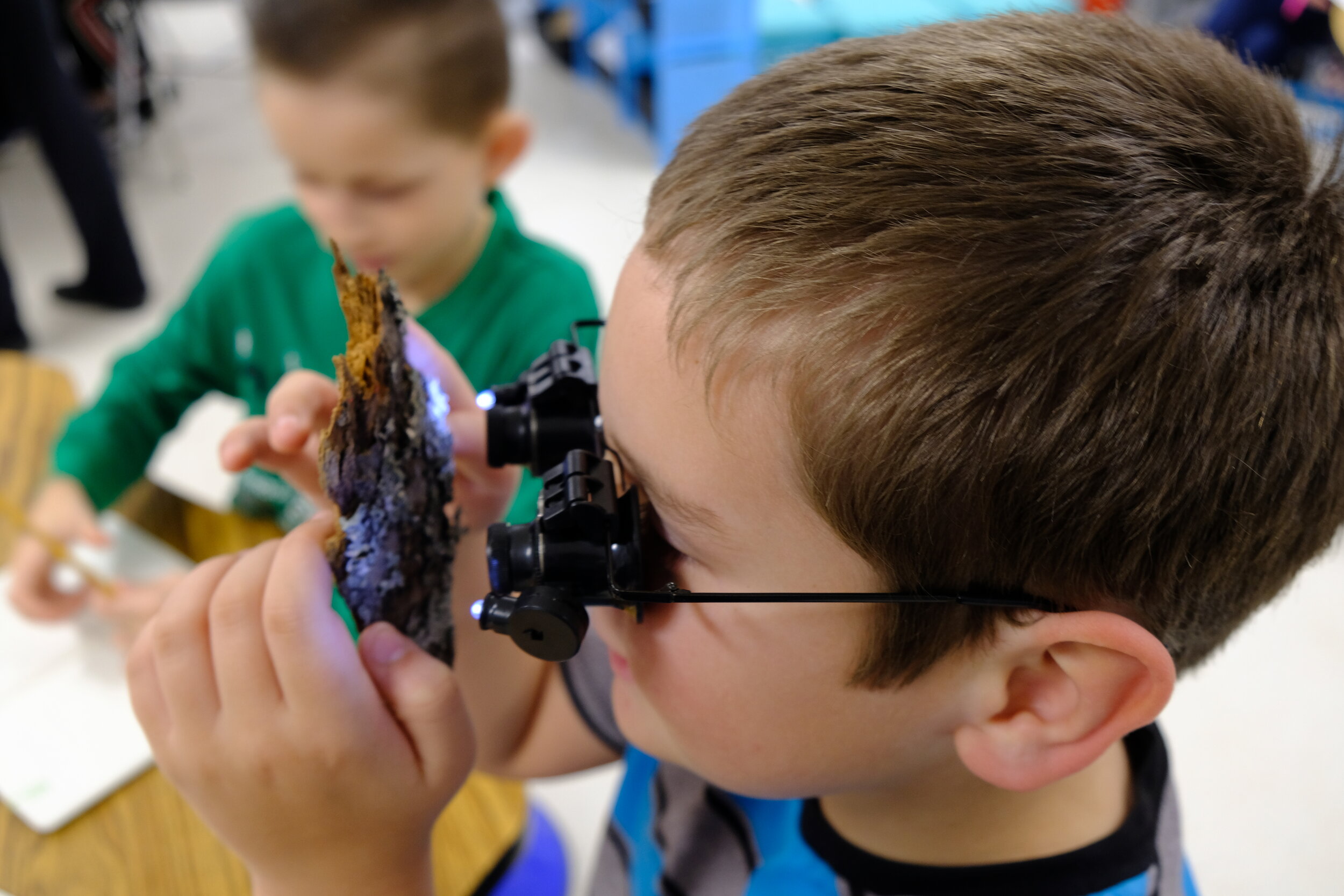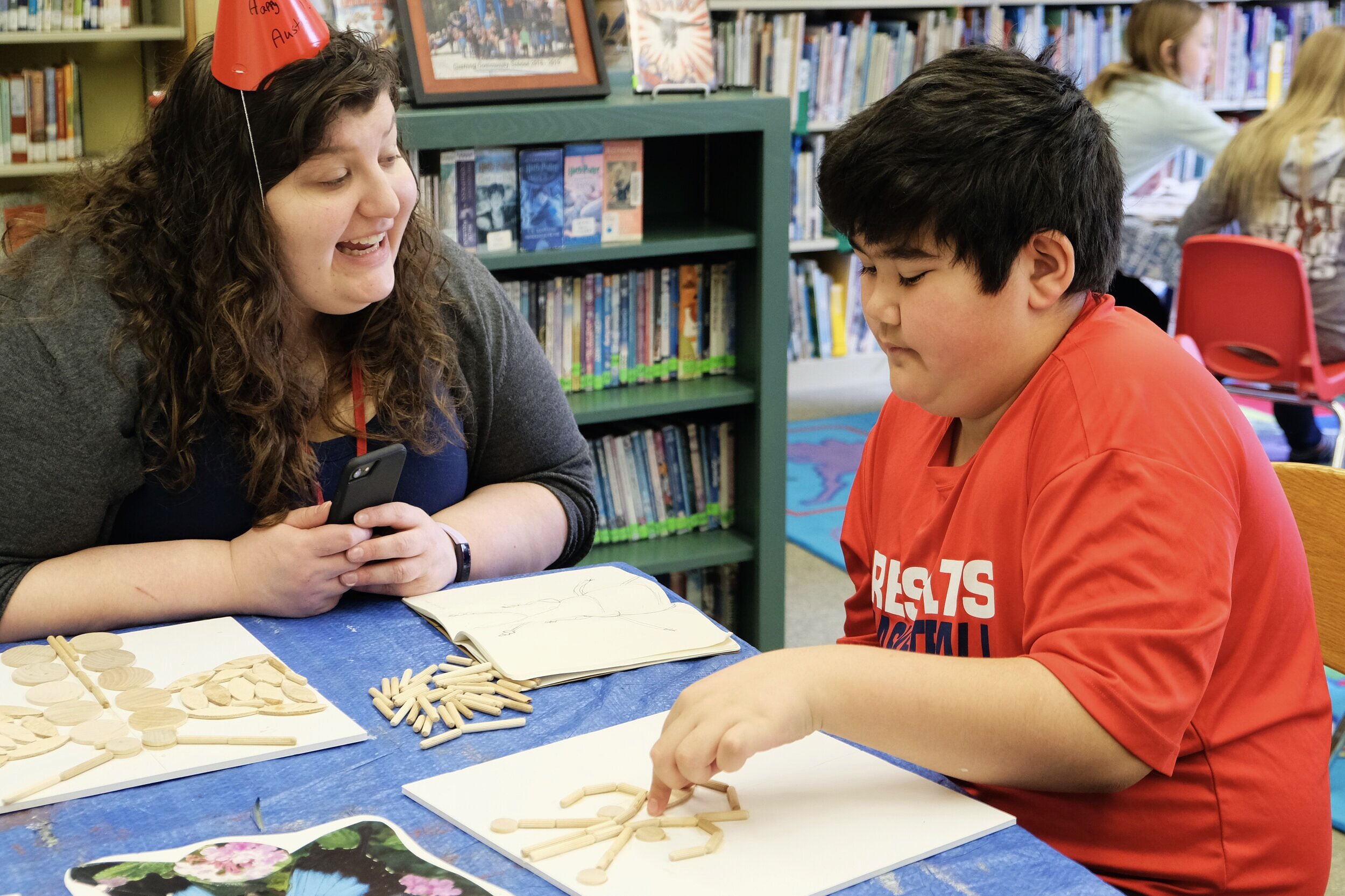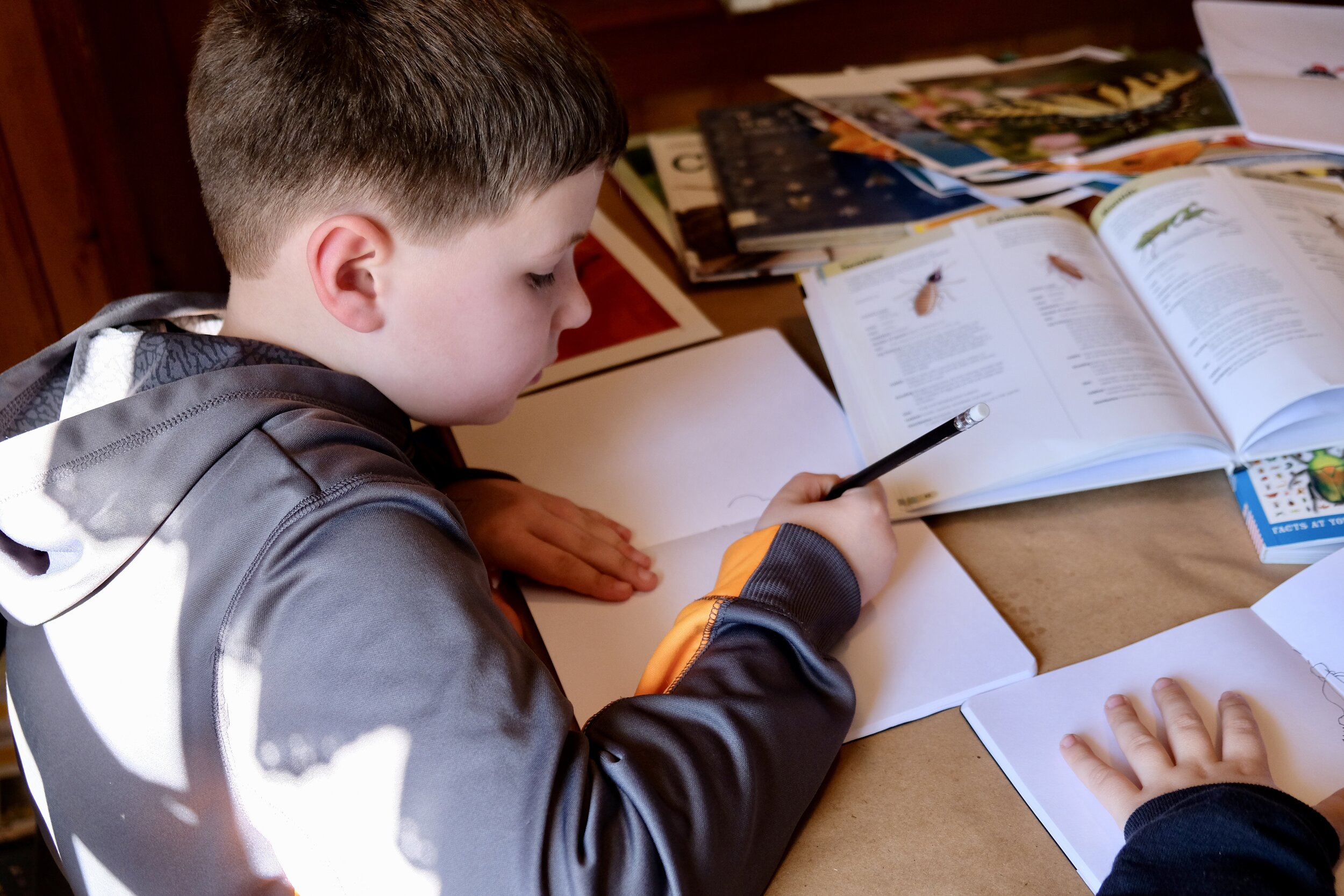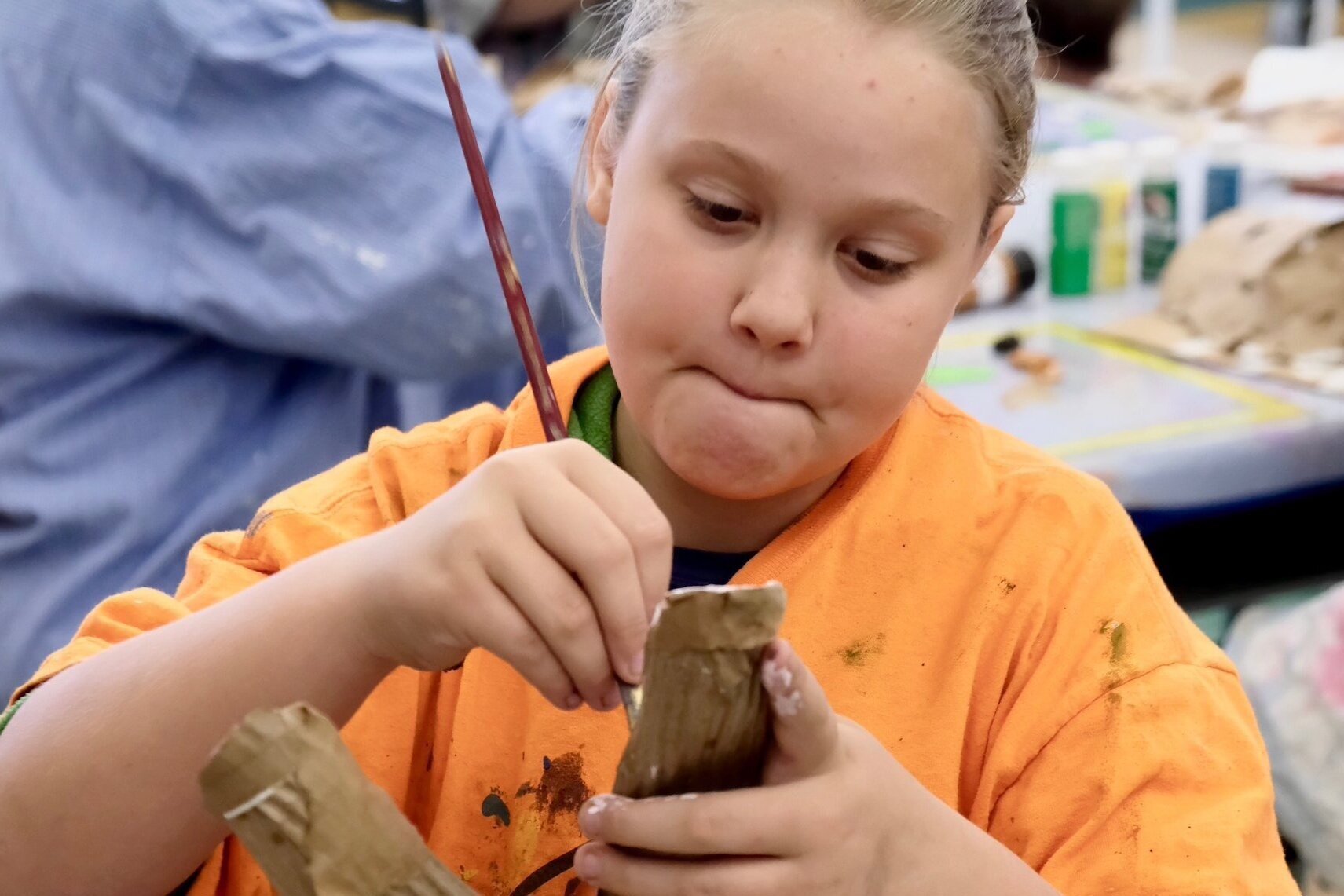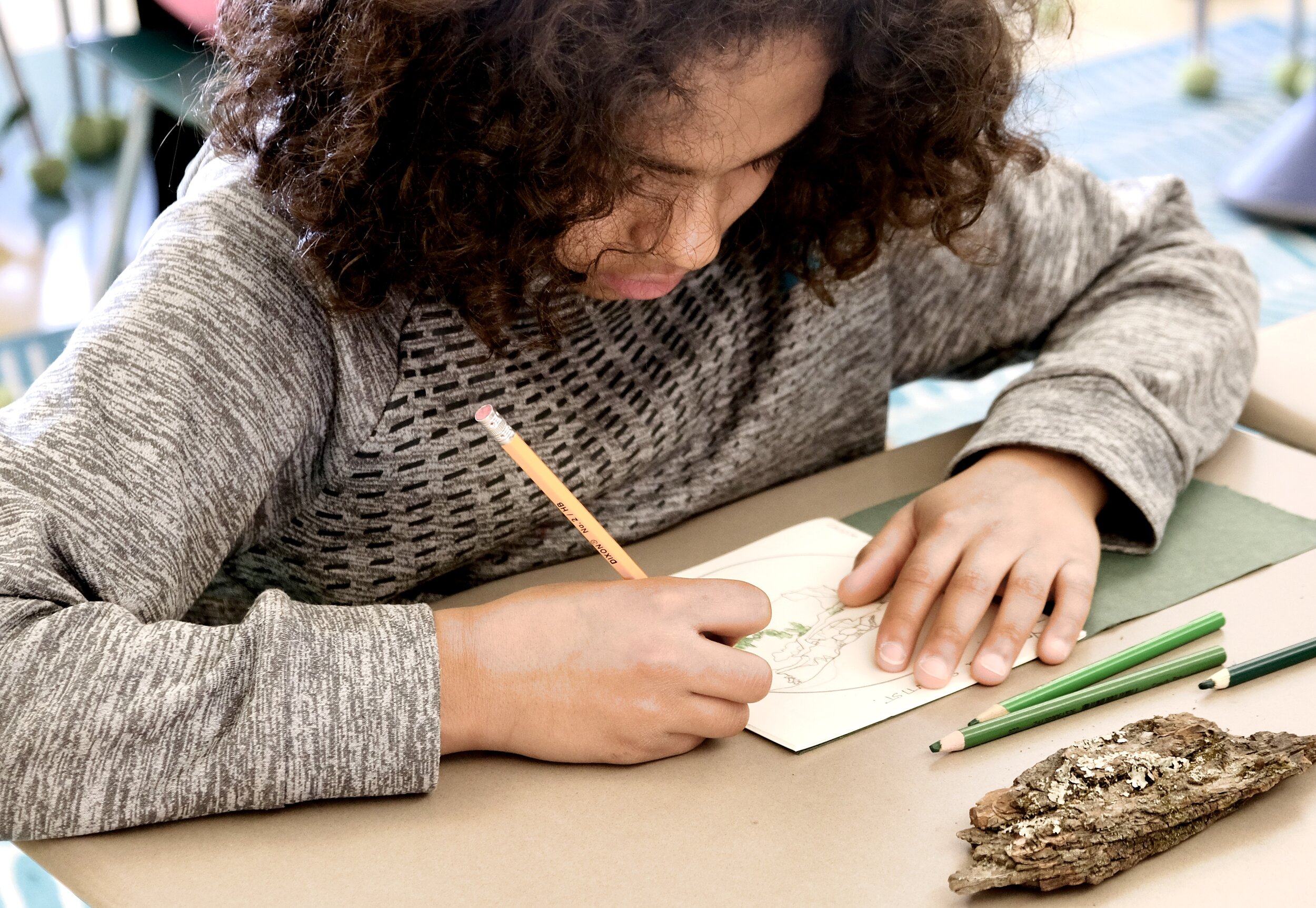I. Cognitive
Through critical thinking and problem solving, students learn higher order thinking skills, which are central to the creative process. Young Leaps’ artists are fearless about imagining and learn to navigate through frustration. Making art deepens their understanding as invested learners across all areas of the curriculum.
A. Thinking Skills
Students engaged in creative practice:
Observe
Categorize
Perceive patterns
Hypothesize
Infer
Analyze
Synthesize
Verify
Apply
Represent
B. Art
Students engaged in creative practice:
Approach art with imagination and original thinking
Explore, combine, and transform materials into tangible forms
Develop new art techniques
Reflect on their own art, accept and offer peer feedback
Refine thinking strategies through long-term
project work
C. Literacy
Students engaged in literacy studies:
Conduct research using books and other resources
Make connections between literature, personal experience, and real world issues
Expand and apply new vocabulary
Record ideas and reflections
Author original stories
D. Place-based Studies
Students engaged in place-based studies:
Identify with their location and develop a “sense of place”
Recognize geographical characteristics of the Maine coast
Identify relevant features on a map
Design original and imaginative maps, applying knowledge of basic land features
E. Environmental Science and Field Experience
Students engaged in environmental science:
Observe and identify attributes of plants and animals
Categorize materials, ideas, and information
Generate and verify hypotheses
Apply research to original artwork
II. COLLABORATION + PERSPECTIVE TAKING
Collaboration is the process by which two or more people or groups work together to realize common goals.
A. Collaboration
We teach learners to:
Solve problems collaboratively
Negotiate with peers
Reach consensus within a group
Respond resiliently
B. Perspectives
We teach learners to:
Take multiple perspectives and respect points of view
Integrate perspective-taking into artwork
Deepen understanding of social justice and environmental issues
III. COMMUNICATION
Communication is central to art making. Students acquire a repertoire of skills, including processing, listening, speaking, questioning, and writing
A. Oral
Students learn to:
Communicate insights and inferences connected to emerging themes and artwork
Share emergent ideas in groups
Dialog about one’s own and/or others’ artwork
Apply new vocabulary in conversation
Craft stories, connecting art to big ideas
Reflect on experience in group context
B. Written
Students learn to:
Document their ideas in journals
Conduct simple research
Write original stories independently or with a partner
Respond to peers’ artwork with written feedback



